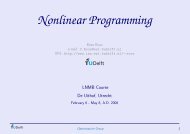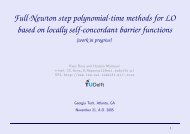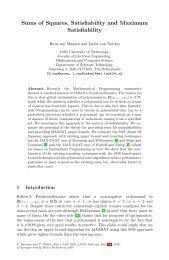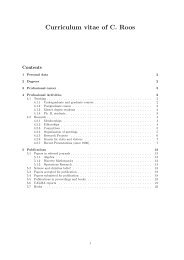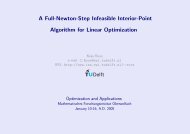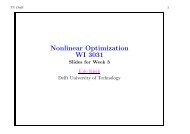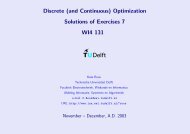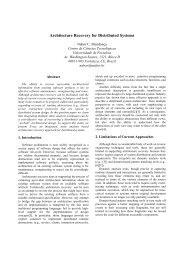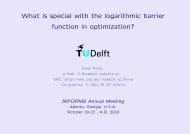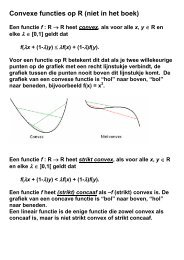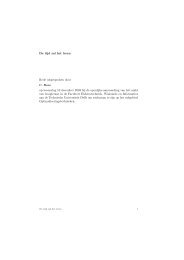On improving efficiency of model checking through systematically ...
On improving efficiency of model checking through systematically ...
On improving efficiency of model checking through systematically ...
Create successful ePaper yourself
Turn your PDF publications into a flip-book with our unique Google optimized e-Paper software.
Table 5.1: Time and memory usage <strong>of</strong> the verification on different abstract<br />
<strong>model</strong>s <strong>of</strong> the algorithm<br />
Number <strong>of</strong> locations Number <strong>of</strong> edges Time Memory usage<br />
3 3 0.55s 13208KB<br />
15 18 0.22s 3324KB<br />
39 48 0.44s 10724KB<br />
71 95 0.98s 15116KB<br />
5.2.3 Fischer’s protocol and Subway system<br />
The Fischer’s protocol input <strong>model</strong> is constructed from an XTG <strong>model</strong>. The<br />
manual transformation process was a big effort even for the input <strong>model</strong><br />
consisting <strong>of</strong> only two parallel processes. We had to revise it several times<br />
before getting a confidence on the correctness <strong>of</strong> the <strong>model</strong>. The final <strong>model</strong>,<br />
which is saved in file fischer-2.ba, can be found in Appendix A.3.<br />
The original <strong>model</strong> <strong>of</strong> the subway system is specified in Lustre input<br />
file metros.lus. The system being verified involves 2 subways. We derived<br />
three different <strong>model</strong>s according to the property <strong>of</strong> interest: property 1,<br />
2a and 2b. The properties 2a,2b are two different parts that form property<br />
2 (see Chapter 4). Those <strong>model</strong>s are saved in file metros-prop1.ba,<br />
metros-prop2a.ba, andmetros-prop2b.ba.<br />
In this thesis, we only present the result <strong>of</strong> <strong>model</strong> <strong>checking</strong> property<br />
1 for the subway system since there is no different in the result <strong>of</strong> <strong>model</strong><br />
<strong>checking</strong> between either <strong>of</strong> three properties. This property states that “A<br />
train cannot move in one step from the state late to the state on-brake,<br />
and conversely.”. Nbac could generate 6 different abstract <strong>model</strong>s for the<br />
<strong>model</strong> to verify property this property.<br />
The verification result is not very encouraging since we has no conclusive<br />
answer about the truth <strong>of</strong> the property for either two case studies. Uppaal<br />
could not finish the verification on any <strong>model</strong> before exhausting all available<br />
memory resource.<br />
5.3 Problem characterization<br />
As presented in Section 5.2.3, the verification experiments <strong>of</strong> the Fischer’s<br />
protocol and Subway system did not give any conclusive answer due to<br />
the exhaustion <strong>of</strong> memory resource during verification. This result implies<br />
that the state space <strong>of</strong> those systems are too large for Uppaal to finish<br />
the exhaustive search within avalaible memory resource. An estimation <strong>of</strong><br />
49



